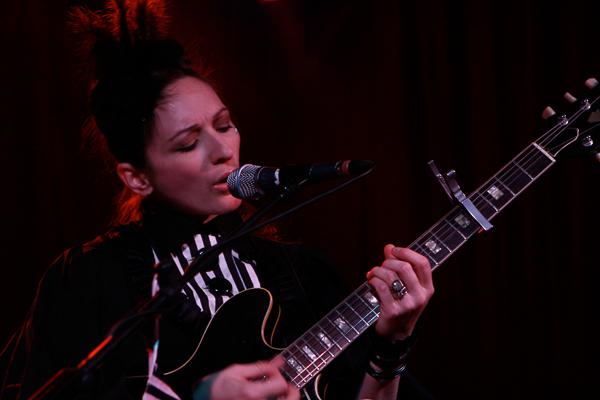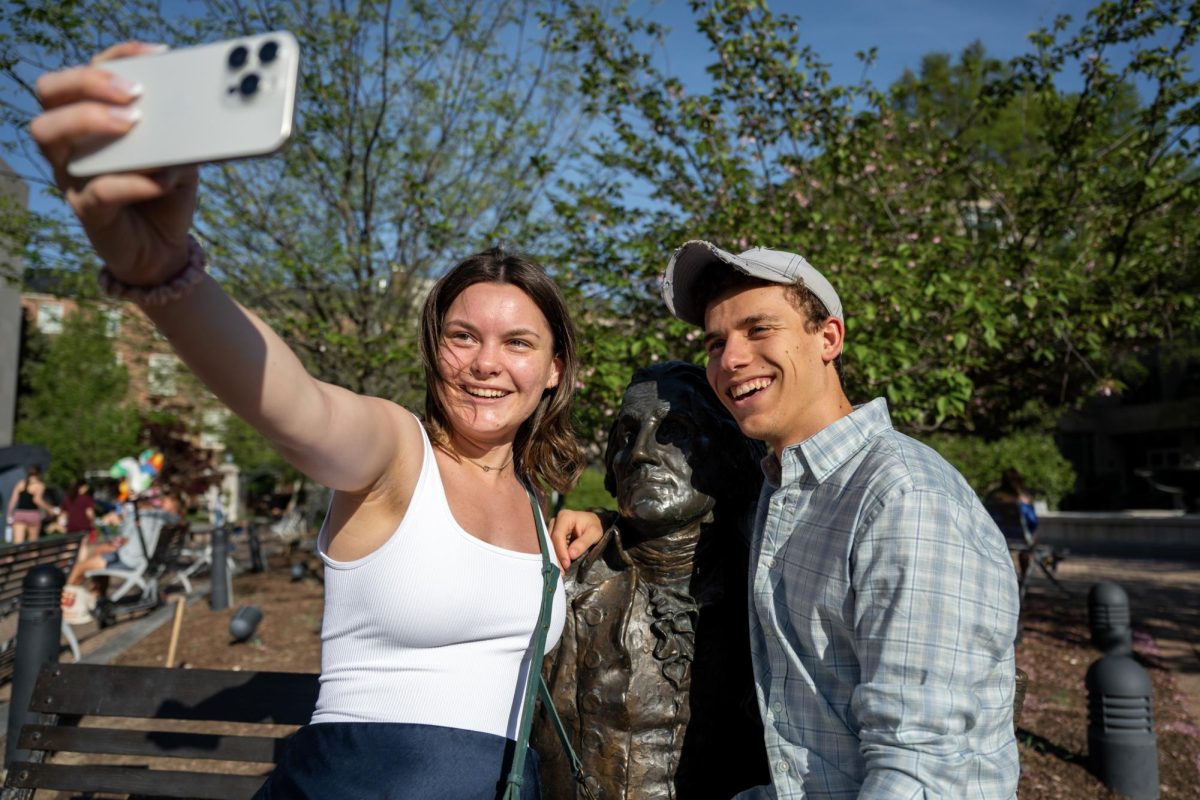Shara Worden, the front-woman of eclectic rock band My Brightest Diamond, is preparing to tour for the group’s fourth studio album, “This Is My Hand,” which dropped Tuesday.
Before she brings her intensity and fresh material to the Rock & Roll Hotel on Sept. 27, we spoke to Worden about stealing from Lady Gaga, resisting creative urges and the challenges of remixing her own songs for tours. The interview was edited for length.
Rookie premiered the video for “Pressure,” and the song seems like an anthem of sorts. Could you talk about the inspiration behind the song? The drumline right off the bat really kick-starts the album.
Shara Worden: I read this book called “The World in Six Songs” by Daniel Levitan, and I was thinking about the tribe and sort of the function of music in our culture and what does this modern day tribe look like. So I made a list of kind of all of these collective activities that this ostensible tribe would do, whether it was singing, clapping, dancing together and I thought, “Oh, there are tons of marching bands in Detroit,” and I thought this is such a good metaphor or a good symbol in American culture of where we are all gathering together in this collective experience.
So I was listening to Lady Gaga when “Applause” came out and I was like, “That’s it, I love this song,” and so I stole the intro to “Applause.” I kind of stole the form of it. I’ve never done that before. I felt completely guilty. I rearranged it and wrote my own thing, but originally the Lady Gaga song was the inspiration.
You combine so many different forms of music in your songs, and many people have said that you’re the sonic representation of what mixed media is for visual art. Does that come from your wide range of vocal training and your history with opera, or does it go back further than that?
SW: I had a very musical family and they were very, very wide listeners. My dad was a classical accordion player, but he also was a church choir director. But then he went to the library – and I’ll never forget this – I was in third grade, he brought home Michael Jackson’s “Thriller” on vinyl. And I don’t know any other choir directors, first of all, from conservative charismatic churches who would have been bringing home their children – their 8-year-old, their 9-year-old – Michael Jackson’s “Thriller.”
I think who you are is such a result of your listening environment. I mean, yes, there’s a lot of invention in honing one’s own musical language, but I think it also has to do with the fact that I’ve really lived all over the country, and then had that for a crazy family.
When I was a teenager, I was in Michigan, and it was the early ’90s, so there was amazing rap and hip-hop happening. That’s what I listened to on the radio, and then I would go to school and I was studying Bach. So I’ve always had this running dichotomy of this and this, and this and this.
Is it difficult for you to find a balance?
SW: I use restriction, so every record that I make. Because I can be all over the place. I try to set up these really specific guidelines, especially because I have been self-producing. For this one, I was like, “No strings. We’re going to do horns and synth and drums – and that’s it.” I think by using these sort of guidelines, I try to create some signpost. Otherwise, good Lord, I would just be an eclectic mess (laughs). I like too many things.
What inspires the dichotomy between your vocal softness and the visual intensity of the music videos?
SW: There’s beauty and suffering, right? And truth. If you look at kind of that classic triad, truth is very clear and it’s like a straight line. But truth is harder to talk about. I think about beauty and suffering a lot. If something is too perfect, we don’t like it because it doesn’t actually reflect our experience. And if we stay too much in the pain, then that’s not where we want to be either.
So it’s kind of like a mix of the two?
SW: Yeah. Like with the video, we did an entire day, and all of these amazing and gorgeous dancers were going, and I loved it. But I was like, “You know what, we need something sloppy because this is all too perfect. You all are too beautiful.” And so I said, “Can I just thrash myself around on you?” And that’s really what I did. So there’s me making a big old mess in the middle, but I needed some way to show that.
How do those visuals translate to the stage when you’re performing on tour? And do you have a full band with you?
SW: For this tour, there will be drums, bass and then me as the octopus. I’m going to be on keyboards and foot pedals and guitars, so all over the place and hopefully having a lot of fun being an octopus. I have to remix myself in order to be able to do it without the wind section, but it will be fun. It’s a remix.







